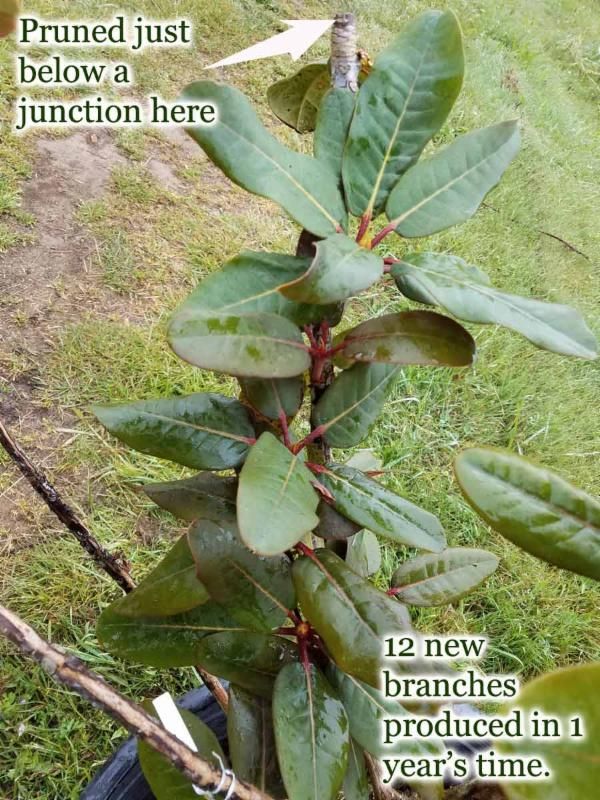Living Fences: Planning, Planting, And Pruning For Success

Table of Contents
Planning Your Living Fence: Site Selection and Species Choice
Before you even think about planting, careful planning is essential for a successful living fence. This involves choosing the right location and selecting the perfect plants for your specific needs and environment.
Choosing the Right Location
The location of your living fence greatly impacts its growth and longevity. Consider these factors:
- Sunlight Exposure: Most shrubs thrive in at least six hours of sunlight daily. Determine whether your chosen location receives full sun, partial shade, or full shade to select appropriate plant species. Living fence location and sunlight exposure are key considerations.
- Soil Conditions: Well-drained soil is crucial. Poor drainage can lead to root rot. Amend heavy clay soils with organic matter to improve drainage. Analyze your soil's composition and pH level for optimal plant health. Site selection and soil drainage are vital.
- Space and Height: Measure the area available for your living fence and choose plants that will eventually reach your desired height. Consider future growth and leave adequate space between plants.
- Wind Protection: Prevailing winds can damage young plants. Consider planting your living fence in a location that offers some natural wind protection, or select wind-resistant species. Wind protection is important for living fence location.
Selecting the Perfect Plants
Choosing the right plant species is key to a successful living fence. Consider these aspects:
- Evergreen vs. Deciduous: Evergreens provide year-round screening, while deciduous plants offer seasonal color changes.
- Flowering vs. Non-Flowering: Incorporate flowering shrubs for added beauty and attract pollinators.
- Thorny vs. Non-Thorny: Thorny plants offer extra security and deter intruders.
- Climate Zone and Hardiness: Select plants that are suitable for your specific climate zone and can withstand the local temperature extremes.
- Growth Rate: Fast-growing options create a quick screen, while slow-growing varieties require more patience but often result in a denser hedge.
- Mature Size: Consider the mature height and width of the plants to ensure they fit your space.
Popular choices include: Hawthorn (Crataegus), Privet (Ligustrum), Holly (Ilex), and many others, depending on your specific needs and local conditions. Choosing the right living fence plants and plant species ensures success.
Planting Your Living Fence: A Step-by-Step Guide
Once you've planned your living fence, it's time to plant! Proper planting techniques ensure healthy growth and establishment.
Preparing the Ground
Before planting, prepare the ground thoroughly:
- Tilling: Loosen the soil to a depth of at least 12 inches to improve aeration and drainage.
- Compost Amendment: Incorporate compost or other organic matter to enrich the soil and provide essential nutrients.
- Weed Removal: Remove any existing weeds or grass to prevent competition for resources.
Proper soil preparation is crucial for planting living fences. Ensure adequate spacing between plants based on their mature size.
Planting Techniques
Follow these steps for successful planting:
- Digging Holes: Dig holes slightly larger than the root ball of each plant.
- Backfilling: Gently backfill the holes with soil, ensuring the plant is at the same depth as it was in its container.
- Watering: Water thoroughly after planting to settle the soil and help the roots establish.
- Protection: Protect newly planted saplings from harsh weather conditions using windbreaks or mulch. Guard against pests and diseases with appropriate preventative measures.
These planting techniques ensure healthy planting hedges and planting shrubs.
Pruning Your Living Fence: Maintaining Shape and Health
Regular pruning is essential for maintaining the shape, density, and health of your living fence.
The Importance of Pruning
Pruning encourages dense growth, maintains the desired shape, removes dead or damaged branches, and promotes healthy growth. Different pruning techniques can create formal or informal shapes. Proper pruning hedges and pruning shrubs are vital for hedge maintenance.
Pruning Schedules and Techniques
- Timing: The best time to prune most shrubs is in late winter or early spring, before new growth begins.
- Techniques: Heading back involves cutting back the tips of branches to encourage bushier growth. Thinning out removes entire branches to improve air circulation and light penetration.
- Tools: Use sharp, clean pruning shears or loppers for precise cuts to prevent damage to the plant. Safety precautions, such as wearing gloves, are important.
A regular hedge maintenance schedule, including hedge trimming, ensures your living fence looks its best and remains healthy.
Creating the Perfect Living Fence for Your Property
Creating a thriving living fence involves careful planning, proper planting techniques, and regular maintenance, including pruning. Remember the significant benefits: increased privacy, enhanced beauty, environmental sustainability, reduced noise pollution, and a welcoming habitat for wildlife. By following these steps, you can transform your landscape and enjoy the rewards of a beautiful, natural boundary. Start planning your dream living fence today and transform your landscape! Learn more about different living fence plants and design options to create the perfect natural boundary for your property.

Featured Posts
-
 Rtl Dpg Media Deal Regulatory Green Light Anticipated In 6 Weeks
May 29, 2025
Rtl Dpg Media Deal Regulatory Green Light Anticipated In 6 Weeks
May 29, 2025 -
 China Sinograins Soybean Auction Addressing Supply Shortages
May 29, 2025
China Sinograins Soybean Auction Addressing Supply Shortages
May 29, 2025 -
 Updated Full Year 2025 Outlook From Qiagen Following Exceeding Q1 Expectations
May 29, 2025
Updated Full Year 2025 Outlook From Qiagen Following Exceeding Q1 Expectations
May 29, 2025 -
 Harry Potter Lessons Learned From Past Adaptations
May 29, 2025
Harry Potter Lessons Learned From Past Adaptations
May 29, 2025 -
 Jawa Tengah 24 April Prakiraan Cuaca Dan Peringatan Dini
May 29, 2025
Jawa Tengah 24 April Prakiraan Cuaca Dan Peringatan Dini
May 29, 2025
Latest Posts
-
 2025 Love Moto Stop Cancer Online Auction Faqs
May 31, 2025
2025 Love Moto Stop Cancer Online Auction Faqs
May 31, 2025 -
 2025 Pro Motocross Championship What To Expect
May 31, 2025
2025 Pro Motocross Championship What To Expect
May 31, 2025 -
 Dont Miss Out 2025 Love Moto Stop Cancer Online Auction
May 31, 2025
Dont Miss Out 2025 Love Moto Stop Cancer Online Auction
May 31, 2025 -
 Supercross Is Back The Salt Lake City Race Is Coming Soon
May 31, 2025
Supercross Is Back The Salt Lake City Race Is Coming Soon
May 31, 2025 -
 Pro Motocross 2025 Riders Races And Predictions
May 31, 2025
Pro Motocross 2025 Riders Races And Predictions
May 31, 2025
